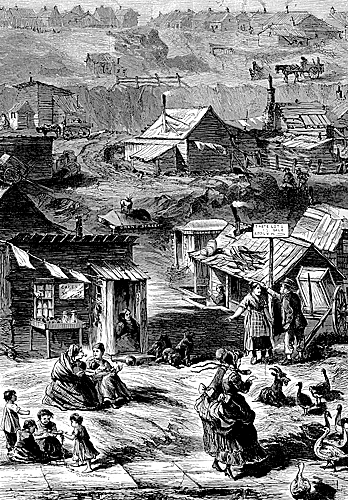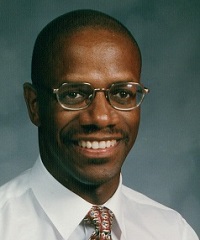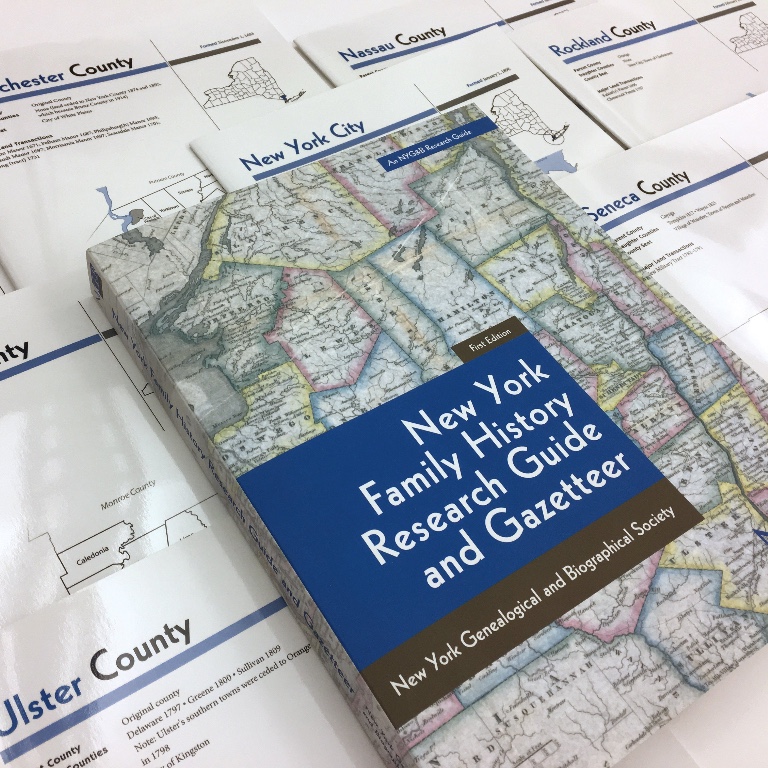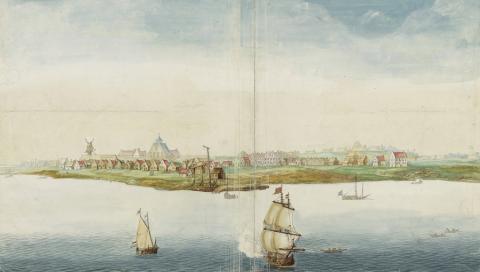Are you researching African American families from New York State? This kind of research can be amazingly complicated and full of brick walls.
If you're encountering trouble in your research, or are looking for a good way to get started, the NYG&B website contains a number of resources that cover this subject.
Members of the New York Genealogical and Biographical Society have access to two webinars related to African American genealogy, a number of scholarly articles published in The Record, and a useful bibliography for further reading.
Read on for more information on these resources, and direct links to access them.
If you're interested in African American research but are not a member of the NYG&B, we invite you to join us and the Afro-American Historical and Genealogical Society on Saturday, February 10 for a special lecture. This event is free and open to the public.
Author Aaron Goodwin will be presenting The Andrew Williams Family of Seneca Village: A Case Study of African American Research in New York.

D.E. Wyand in Harper’s Weekly (1869).
Prior to Aaron's work, those who researched this family - who lived in Seneca Village, now part of Central Park - hit a brick wall.
Aaron will walk us through his work and show that by using traditional genealogical sources and a thorough, methodical research plan, much more can be discovered about the African American residents of Seneca Village and beyond that settlement, in nineteenth century New York City.
The lessons learned will be valuable to apply to your own research.
We hope to see you there and hope that you may enjoy our online resources in the meantime.
Articles in The Record
Reading articles in The Record is one of the best things a learning genealogist can do to improve their skills. By reading the peer-reviewed work of an expert, one is able to follow their process step by step, and learn not only what records the researcher used to make their discoveries, but the approach they used to do so as well.
If you have ancestors in the time or place of the article's subject, these are can't-miss resources that will give you excellent ideas for further avenues of research.
Researching African-American Families in New Netherland and Colonial New York and New Jersey.
Henry Hoff, NYG&B Record, vol. 136, no. 2 (2005): 83-95.
Anyone investigating African American heritage in colonial times should have this article at the top of their reading list.
Hoff notes that researchers will face all of the usual pitfalls typical of this time and place: "lack of records, incomplete records, unpublished records, and poorly indexed records."
But he also delves into problems (and solutions) specific to researching African Americans during this time period:
- Many records fail to identify African Americans as such.
- African Americans were not included in some records.
- Dutch naming conventions (which many freed slaves adopted) may cause the first and last name to change from record to record.
- Many of these families were too well-behaved (rarely appeared in court records, one of the best sources).
He also offers detailed advice in focusing on the following four areas of African American research:
- Names
- Church Records
- Law and Custom
- Chronology
Aside from listing many further sources for researchers to consult, Hoff includes, as an appendix, a genealogical summary of fourteen African-American families traceable for three or more generations.
Members can read the full article here
Abstracts of Early Black Manhattanites.
Richard Dickenson, NYG&B Record, vol. 116 (1985), no. 2: 100-104; no. 3: 169-173.
This article, written by Richard Dickenson in a 1985 issue of the NYG&B Record details the origins of early Black Manhattanites. The two-part article also abstracts passages from Volume VI of Isaac Newton Phelps Stoke's six-volume work The Iconography of Manhattan Island, 1498-1909.
Although it is a secondary source, the original volume contained many facsimiles of original documents, which are now very difficult (if not impossible) to obtain.
The article contains dozens of sketches of some of the very first inhabitants of Manhattan Island, including narrative details, appearances in records, family members, and citations.
Click here to read this two-part article
Swan Janse Van Luane: A Free Black in 17th Century Kings County
Henry Hoff, NYG&B Record, vol. 125 (1994), no. 2: 74-77.
In this 1994 article, Henry Hoff relates "a success story of 17th century New York," that of Swan Janse van Luane. He arrived in New Amsterdam around 1654 as a slave - ten years later he was a free man, and ten years after that he owned land on Long Island.
This enthralling work of history and genealogy tells a fascinating tale through original documentary evidence and will be an excellent resource for early New York researchers, who can learn much from Hoff's sources, methods, interpretation, and knowledge of the period and subject.
Members can read the full article here
Slavery Records in the Common Council Papers at the New York City Municipal Archives
Meryl Schumacker, NYG&B Record, vol. 149 (2018), no. 1: 21 - 38
This article, from the most recent issue of The Record, highlights an often-overlooked avenue for African American research in New York City.
From 1675 to 1897, the legislative body of New York City was called the Common Council of the City of New York. The minutes of the day-to-day business of this body have been published and contain useful data, but the “original letters, petitions, depositions, and other documents that informed the Common Council meetings” contain far more information and some truly invaluable documents.
In fact, some records in the Common Council Papers are not even referenced in the Common Council Minutes. “Among the papers not included in the minutes are dozens of genealogically relevant records of slaves and their children in New York City and elsewhere.”
They document manumissions, sales, crimes, movement into and out of the state, births of free children to enslaved mothers, and depositions on free black New Yorkers by their white neighbors.
This article includes details of many slavery-related documents found in this collection and will be invaluable to any researchers who are unable to visit the Municipal Archives in person, where the Common Council Papers are contained in print and on microfilm. For those that are able to travel down to 33 Chambers Street, there is also advice on locating additional records in the collection that are not detailed in this article.
Click here to read the full article
Some Ancestors of Nelly Jane (Franklin) Lefevre: An African American of the Mid-Hudson Valley
Joan de Vries Kelley, NYG&B Record, vol 145 (2014) no. 4: 245-258; vol 146 (2015), no. 2: 107-116; no. 3: 187-197; no. 4: 283-298, 311.
In this series, which was published in 2014 and 2015, Joan de Vries Kelley outlines the challenges of tracing African Americans in New York's mid-Hudson Valley. Even after 1850, census information was scarce for this segment of the population. As many were poor and illiterate, family bibles, land ownership records, estate settlements and even cemetery tombstones are not usually fruitful sources.
Despite these challenges, de Vries Kelley uses evidence from common sources - and a few unusual ones - to trace the ancestry of Nelly Jane (Franklin) Lefevre. For those interested in learning about the life of African Americans in the mid-Hudson Valley, or those hoping to replicate de Vries Kelley's research methods, this article is a must-read.
Members can read all five parts online.
Frans Abramse Van Salee and His Descendants: A Colonial Black Family in New York and New Jersey
Henry Hoff, NYG&B Record, vol 121 (1990) no. 2: 65-71; no. 3: 157-161; no. 4: 205-211.
In 1990, Henry Hoff wrote that the past few decades had seen much written about blacks in early New York, yet "relatively little attention [had] been paid to the genealogies of free black families in New York."
Thankfully, as we can see from his numerous contributions to the subject listed in this article, Hoff produced some excellent work in this area. The Van Salee family, his subject in this series, is one of the few early black families that can be traced into the 19th century.
The article appears in three parts, all of which are available for NYG&B members to read online. As with his other articles, researchers working in this time period will benefit greatly from studying Hoff's method, sources, and insight into this challenging area of research:
Members can read the three-part article here.
Webinars and Video
The NYG&B has an ongoing webinar series - live broadcasts are free and open to the public (see our events calendar for upcoming webinars), and recordings are available for members of the society to access on-demand in our webinar library.
Examining African American Migrations
Migrations have been an integral part of the African American experience in the United States, which makes them very important in the pursuit of African American genealogical research.
Join Tim Pinnick, author, writer, and national speaker with over 30 years research experience, as he dives into this vital subject.
He explores migrations large and small, along with their contexts and implications for research. Armed with a better understanding of African American migrations, researchers can increase their ability to explain inexplicable moves and solve lingering mysteries.
Click here to watch the webinar
 From Virginia to Upstate New York: An African-American Family's Journey
From Virginia to Upstate New York: An African-American Family's Journey
Kenyatta D. Berry, host on the PBS series, Genealogy Roadshow and leading African American ancestral researcher, joined us for a webinar in fall of 2016.
She shared the story of her own family, and how she discovered their connection to Upstate New York as they moved from Virginia and eventually settled in Detroit.
This case study explores how her family got from Virginia to New York and serves as a great example of researching an African American family's journey northward shortly after the Civil War.
Kenyatta's presentation is a perfect companion to Tim, bringing to light many important aspects of African American research.
Click here to watch the webinar
Additional Resources
If you're feeling stuck and would like some personalized assistance, consider a consultation with one of our professionals.
For further reading, NYG&B members should examine our selected bibliography for African-American research, compiled by Henry Hoff, who authored many of the articles above.
The Revised Edition of the New York Family History Research Guide and Gazetteer also contains a chapter on African American research in New York State and offers the following information:
- Historical overview of African Americans in NY State.
- Genealogical resources available at the New York State Archives and National Archives.
- Helpful slavery records, census records, immigration and migration records, military records, business and institutional records, newspapers and religious records for African American research.
- Helpful selected repositories, societies and websites
- Selected bibliography for further reading.
Do you have any other tips for African American research? Let us know in the comments!
About the New York Genealogical and Biographical Society

back-to-back Awards of Excellence from
the National Genealogical Society
in 2016 and 2017.
Since 1869, the NYG&B's mission has been to help our thousands of worldwide members discover their family's New York story, and there has never been a better time to join.
The cost of an Individual Annual Membership is less than six dollars a month, and includes the following benefits:
- Access to over 50 exclusive digital record sets covering the entire state of New York, including the fully searchable archives of The Record.
- A complimentary subscription to all of Findmypast's North American records, as well as U.K. and Irish Census records.
- Access to hundreds of expert-authored Knowledge Base articles and webinars to help you navigate the tricky New York research landscape.
- Exclusive discounts and advanced access to conferences, seminars, workshops and lectures to learn more about researching people and places across New York State.
To learn more or join us, please visit our member benefits page.
